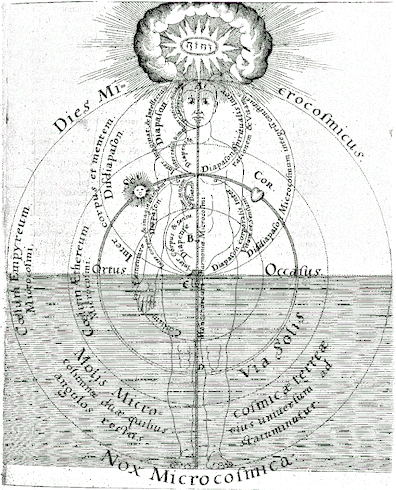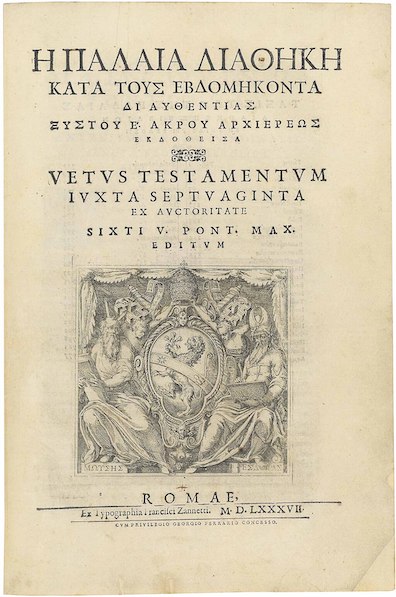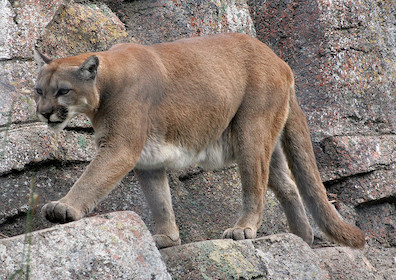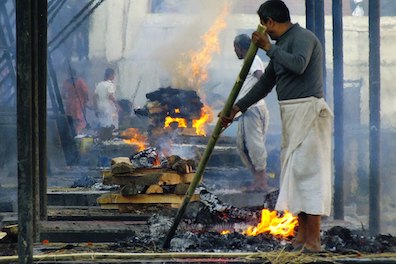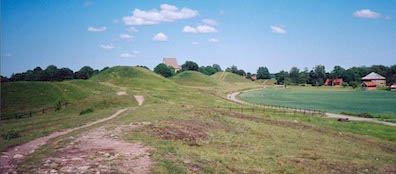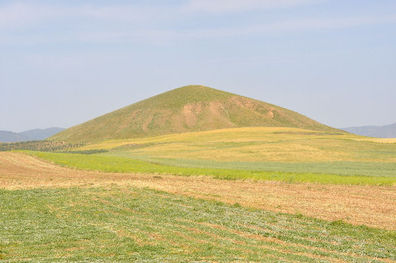In a 13 July 2015 New York Times review of a
biography of Browne, Jim Holt aptly calls him "a minor writer
with a major style." Browne's prose cannot be mistaken for any
written before or since. It is grand, sonorous, and stately,
but also fresh, quirky, and bursting with ingenious
connections. Holt observes that, "At a time when the
prevailing plain style was growing dull and insipid (John
Locke is an example), it was Browne who showed the way to new
possibilities of Ciceronian splendor. In doing so, he became a
prolific contributor of novel words to the English language.
Among his 784 credited neologisms are 'electricity,'
'hallucination,' 'medical,' 'ferocious,' 'deductive' and
'swaggy.' (Other coinages failed to take: like 'retromingent,'
for urinating backward.)"
Many of Browne's words, whether newly coined or common, come
from Latin or Greek roots. He deftly draws readers on through
brisk colloquial strings of short Saxon words to the
polysyllabic abstractions and analogies on which he wants
their attention to linger. "Break not open the gate of
Destruction, and make no haste or bustle unto Ruin. Post not
heedlessly on unto the non ultra of Folly, or
precipice of Perdition. Let vicious ways have their Tropicks
and Deflexions, and swim in the waters of sin but as in the
Asphaltick Lake, though smeared and defiled, not to sink to
the bottom" (Christian Morals 1.30). "Which conceit is
not only erroneous in the foundation, but injurious unto
Philosophy in the superstruction" (Pseudodoxia Epidemica
2.6). "The world that I regard is my selfe, it is the
Microcosme of mine owne frame, that I cast mine eye on; for
the other, I use it but like my Globe, and turne it round
sometimes for my recreation.... whilst I study to finde how I
am a Microcosme or little world, I finde my selfe something
more than the great. There is surely a peece of Divinity in
us, something that was before the Elements, and owes no homage
unto the Sun. Nature tells me I am the Image of God as well as
Scripture; he that understands not thus much, hath not his
introduction or first lesson, and is yet to begin the Alphabet
of man" (Religio Medici 2.12).
Joyce's parody focuses on such weighty anchor-nouns, and a
few similarly ponderous adjectives and verbs. He exaggerates
the neologisms, the strange locutions, the classical learning,
but the spirit of Browne's original is preserved in his
whimsical imitation. Stephen starts by observing that
canonical texts have little to say about his subject: "This tenebrosity
[darkness, from Latin tenebrae] of the interior
[his mind, the Latin word meaning "further within"], he
proceeded to say, hath not been illumined by the wit of the septuagint
[an early Greek translation of the Hebrew Bible, from the
Greek word for "seventy" because supposedly produced in 72
days by 70 scholars] nor so much as mentioned for the Orient
[the resurrected Christ, from the Latin oriens,
"rising," used in the Vulgate translation of Luke 1:78] from
on high which brake hell's gates visited a darkness that was foraneous
[uncertain meaning––Gifford defines it as "utterly remote,"
but without any attribution; the OED documents a 1656
use referring to a market-place or court, from the Roman forum,
which seems inapplicable]. Assuefaction minorates
atrocities [becoming accustomed to them reduces
their impact] (as Tully [the great Roman orator Marcus
Tullius Cicero] saith of his darling Stoics [the Greek
and Roman philosophers whom Cicero studied]) and Hamlet
his father [i.e., Hamlet's father, in an early modern
form of the possessive] showeth the prince no blister
of combustion [he declines to disclose the
effects of Purgatorial fire to his
son]."
Then Stephen sketches a schematic of human life in which
darkness becomes representative of an underlying truth: "The adiaphane
[Aristotle's Greek word for "non-transparent," pondered
in Proteus] in the noon [middle] of life
is an Egypt's plague [Exodus 7-12] which in the
nights of prenativity and postmortemity
[Latinate pre-birth and post-death] is their most proper ubi
[Latin "where"] and quomodo [Latin "in what manner"].
And as the ends and ultimates of all things
accord in some mean and measure with their inceptions
and originals [the two Latinate pairs articulate
an idea from Aristotle's Physics], that same multiplicit
concordance [manifold correspondence] which leads forth
growth from birth accomplishing by a retrogressive metamorphosis
[development in reverse] that minishing [i.e.,
diminishing] and ablation [Latinate "carrying away" or
"removing"] towards the final [end, from Latin finis]
which is agreeable unto nature so is it with our subsolar
being [life under the sun]."
Finally, Stephen meditates on the biblical life of Moses as a
paradigm of the symmetry of birth and death: "The aged
sisters [the three Fates of Greek mythology, and the midwives
on Sandymount Strand] draw us into life: we wail, batten,
sport, clip, clasp, sunder, dwindle, die: over us dead they
bend. First, saved from water of old Nile,
among bulrushes [sedges, perhaps papyrus stalks, made
into a small boat in Exodus 2:3] a bed of fasciated
[bound together, from Latin fascia, "band"] wattles
[poles woven together with twigs or reeds]: at last the cavity
[hole, from Latin cavitas, "hollowness"] of a
mountain, an occulted [Latin occultus,
"concealed"] sepulchre [Latin sepulcrum, burial
vault] amid the conclamation [Latinate coinage, "great
shouting together"] of the hillcat [perhaps a cougar,
a.k.a. puma or "catamount"] and the ossifrage [bearded
vulture, or lammergeier]. And as no man knows the ubicity
[location, from ubi above] of his tumulus
[Latin for burial mound] nor to what processes we shall
thereby be ushered nor whether to Tophet [the Hebrew
"place of burning" corpses and sacrificing infants, read
typologically by Christians as an image of Hell] or to Edenville
[Stephen's coinage for the earthly paradise
in Proteus] in the like way is all hidden when we
would backward see from what region of remoteness the
whatness of our whoness hath fetched his whenceness."
In Nestor Stephen inverts a famous phrase from John's
gospel to explore an anti-Christian metaphysics
inspired by writers like Averroes, Moses Maimonidies, the
pseudo-Dionysus, Henry Vaughan, and William Blake: "and in
my mind's darkness a sloth of the underworld,
reluctant, shy of brightness, shifting her dragon scaly
folds"; "dark men in mien and movement, flashing in
their mocking mirrors the obscure soul of the world, a
darkness shining in brightness which brightness could not
comprehend." In Oxen of the Sun he returns to
"This tenebrosity of the interior" via the style of Browne,
who shares with fellow 17th century writer Vaughan an affinity
for metaphysical conceits. Stephen says that tenebrosity is
not "illumined" or even mentioned in the Bible, despite the
fact that Christ, after his resurrection, descended into the
"darkness" of Hell to rescue the virtuous souls of the Hebrew
scriptures (the so-called "harrowing of hell"). The darkness
of Purgatory, presumably similar, receives no better
illumination in Shakespeare's Hamlet.
After the first two sentences Stephen turns from the ontology
of Heaven, Hell, and Purgatory to the existential psychology
of human beings. In "the noon of life"––the "brightness" of
this world evoked in Nestor––opacity ("The adiaphane")
seems an affliction dreadful as those described in Exodus. But
on either side of life's brightness are "nights." Life is a
passage from darkness to darkness though a brief interval of
light. (In the Ecclesiastical History Bede vividly
articulated this view with an image of a bird flying through
an open window into a lighted room and back out into
darkness.) Nature forms us into complicated, capable beings,
and then, since "the ends and ultimates of all things"
correspond to "their inceptions and originals," it tears us
down, unmaking what it has made. Mythical old women see us
into life and then out of it. As babies they hide us in arks,
and as corpses they put us in places where only wild animals
hunting for meat may find us. None of us can know where we are
going after death, any more than we can know where we came
from before birth.
Half of one sentence has been omitted from this paraphrase,
as it quotes directly from Browne, requires some contextual
framing, and presents interpretive difficulty. As first noted
by Thornton (Robert Janusko adds the observation that Joyce
came across the words in Saintsbury's study of English prose
styles), "Assuefaction minorates" reproduces two of Browne's
strange coinages. Christian Morals warns against
trusting in visual reminders like memento mori icons
to keep one's thoughts focused on human mortality and divine
beneficence: "Forget not how assuefaction unto any thing
minorates the passion from it, how constant Objects
loose their hints.... When Death's Heads on our Hands have no
influence upon our Heads, and fleshless Cadavers abate not the
exorbitances of the Flesh; when Crucifixes upon Men's Hearts
suppress not their bad commotions, and his Image who was
murdered for us with-holds not from Blood and Murder;
Phylacteries prove but formalities" (3.10). Thornton also
quotes a sentence from Cicero's Tusculan Disputations
that may account for Stephen's remark about Tully's "darling
Stoics": "anticipation...of the future mitigates the approach
of evils whose coming one has long foreseen."
Cicero advocates stoically calming perturbation by dwelling
thoughtfully on the everpresent possibility of loss. Browne's
point is no less clear: Christians must labor to maintain vivid
awareness of the emptiness of earthly goods and the abundant
grace of God. Stephen's meaning seems less certain, but it
certainly differs from both Cicero and Browne. He is either
suggesting that familiarity wears away our awareness of
"darkness" (like Stoics cultivating apatheia, we find ways to
convince ourselves that our lives make sense), or, more likely,
that Hamlet's father has gotten so used to the fires of
Purgatory (true "atrocities") that he doesn't think it worth his
while to describe that dark place to his son.
Many of Stephen's thoughts appear to have been inspired by
one small section of the Religio Medici ("Religion of
the Doctor") in which Browne reflects on the impossibility of
predicting how long a human being may live. All lives may
contain "sufficient oil" for the biblical seventy years, he
writes, but "in some it gives no light past thirty,"
suggesting that "There is therefore a secret gloom or bottom
of our days." God works darkly within the natural processes of
birth, growth, and death: "There is therefore some other
hand that twines the thread of life than that of nature: we
are not only ignorant in antipathies and occult qualities;
our ends are as obscure as our beginnings; the line of our
days is drawn by night, and the various effects therein by a
pencil that is invisible; wherein, though we confess our
ignorance, I am sure we do not err if we say, it is the hand
of God." Several of Stephen's ideas pick up on ideas in
these sentences: the linking of human "ends" with
"beginnings," the eternal presence of "gloom" or "night"
within the light of life, and the myth of Fates spinning out
and cutting the thread of an individual life.
In addition to the Christian Morals and Religio
Medici, Joyce seems to have paid close attention to Hydriotaphia,
Urn Burial. (The English in the title translates the
Greek.) Prompted by the discovery of some four dozen
Anglo-Saxon funerary urns in Norfolk, this impressive work
surveys the many known ways in which human beings have
disposed of their dead, before concluding in the magnificent
final chapter that all such archaeological and anthropological
knowledge is rendered superfluous by Christian belief in the
soul's salvation.
Janusko observes that one sentence in the work's first
chapter anticipates Stephen's linking of birth ("a bed of
fasciated wattles") and death ("an occulted sepulchre").
Browne does it by associating the shape of the human uterus
with a common type of urn: "the common form with necks was
a proper figure, making our last bed like our first; nor
much unlike the Urnes of our Nativity, while we lay in
the nether part of the Earth, and inward vault of our
Microcosme." Janusko notes too that Joyce took the word
"fasciated" from a different passage in the first chapter
which describes Jesus breaking the "fasciations and bands
of death" in his Resurrection. By taking this word which
Browne applies to death and using it to describe the boat that
saved baby Moses, Joyce links birth and death in his own way,
in "a conceit worthy of Browne himself" (65).
The intertextual connections do not end there. Stephen says
that Moses was buried in an "occulted sepulchre" in the
mountains, reflecting the biblical belief that "no man knoweth
of his sepulchre unto this day" (Deuteronomy 34:6). Gifford
notes that this burial is mentioned in the first chapter of Hydriotaphia.
Two other details, the tumuli in which many ancient
peoples interred important leaders, and the cremation implicit
in "Tophet," also suggest awareness of Browne's subject
matter. But, like Browne, Stephen is more interested in the
life of the soul.
Gifford and Slote hear a reference to still another of
Browne's works, Pseudodoxia Epidemica, two paragraphs
later when Bloom tries to assure Stephen that thunder and
lightning are nothing but "the discharge of fluid from the
thunderhead." Browne's scientific thinking probably does
figure here, but it hardly justifies Slote's opinion that his
prose style lingers for two more paragraphs after the
"tenebrosity" sentences. The writing in these later paragraphs
is utterly dissimilar. Stylistic influence must be sought in
other sources.

